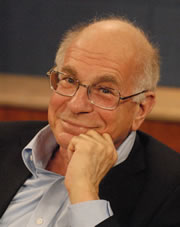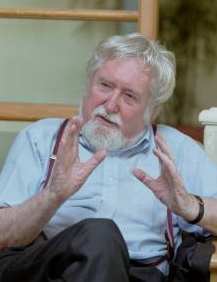- System One - which is intuitive and emotional, and
- System Two - which is systematic and rational.
System One is by far the busiest and it jumps quickly to conclusions and thus avoids paralysis by analysis. In its memory it contains an ever changing world view constructed in parts by nature, nurture and chance.
When new information enters through the sense organs System One mind rapidly associates it with past experiences, sees patterns, and thus judges whether to advance, retreat or ignore. The System One mind sees patterns and makes up stories without seeming to make much thoughtful effort.
You can experience this happening in your own mind by playing the following mind game.
- Gather seven words from a dictionary. Open the book at random and immediately point to anywhere on the page – note the word that is nearest to your finger. Do this seven times.
- Make a story from the words following these instructions:
- The first word is the topic of the story.
- Words 2-4 have to be included in the first paragraph.
- The story should be less than 250 words
Here are some examples:
Seven words: Theatre: confirmed, averse, cellmate, DJ, enthusiastic, faggots
Theatre: The charismatic prisoner confirmed that he would not be averse to his cellmate having the star part in the prison’s new theatrical production.The plot revolves around a DJ who is insatiably enthusiastic about faggots.
Seven Words: Humus: rock, faith, purpose, axiomatic, encephalitis, state
Humus: It was the rock that anchored the gardener’s faith and which suffused him with purpose. The belief that the only constant thing is change.It was thus axiomatic that his encephalitis would result in a state of being what might be called humus. Change and decay in all around I see.
Seven Words: Bed: crowbar, cockatoos, bigamy, footloose, fantasized, embedded
Bed: There was a bed in the huge bird cage at the centre of the zoo. A missing leg had been replaced by a rusty crowbar. The zookeeper was fond of telling visitors why there were three cockatoos in the cage. One was male and two were female. I was an example of avian bigamy.But the male cockatoo was not impressed. He longed to be footloose and often fantasized about living in the wild and servicing an enormous harem. But he had been captured and embedded in the zoo. He tried to escape once. That was when the leg broke and was replaced by the crowbar. The zookeeper was a cheapskate as well as a liar.
For more examples see http://s3.spanglefish.com/s/285/documents/existential/six-words.docx



























